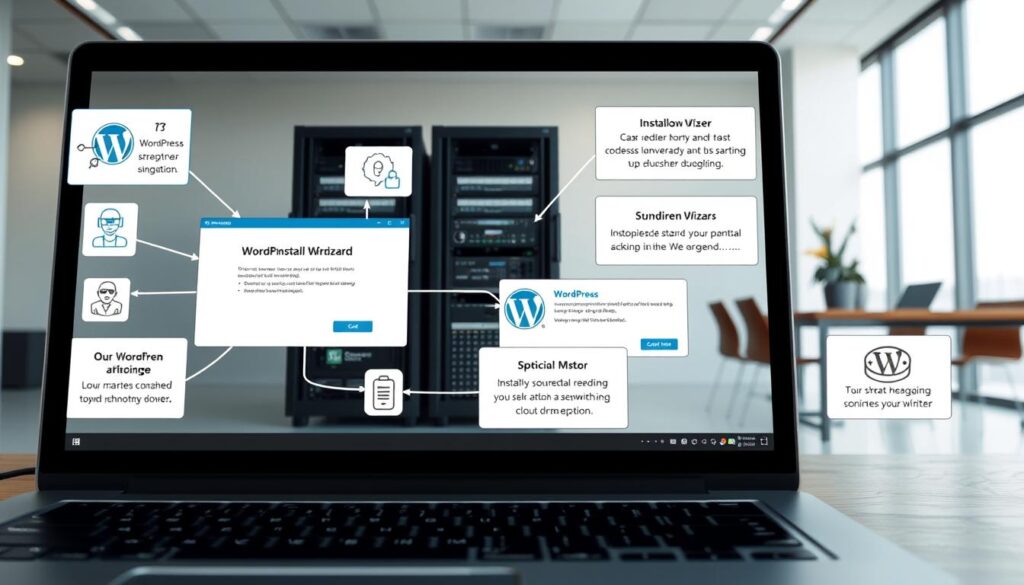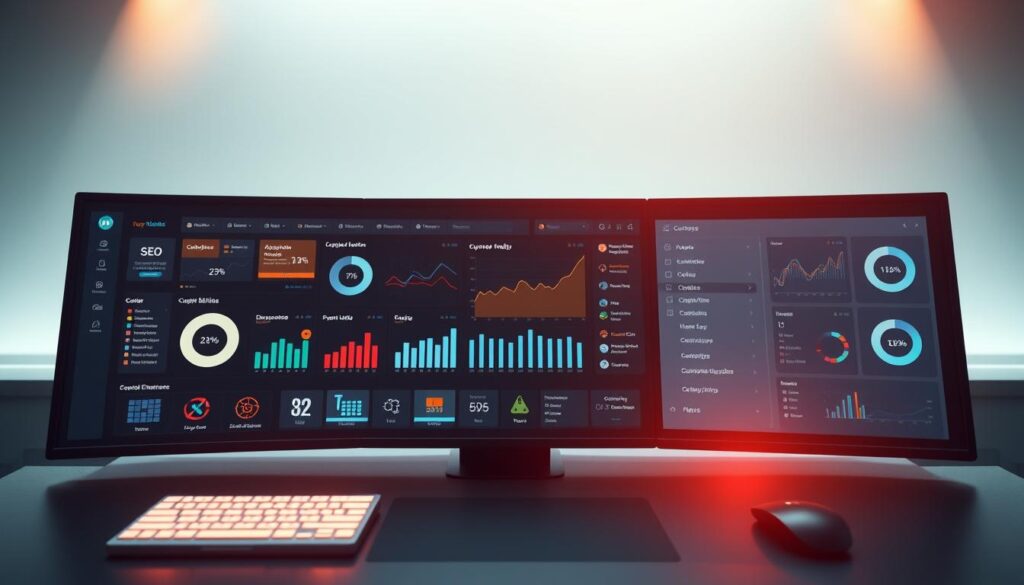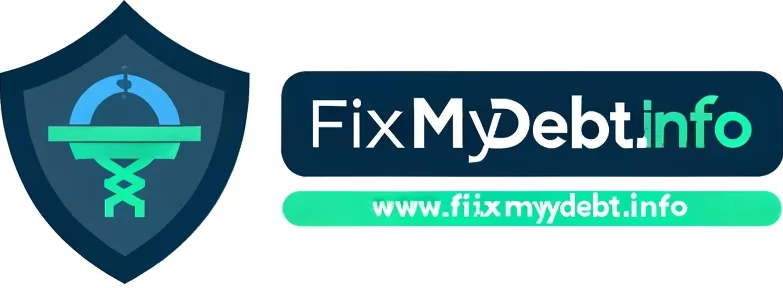Did you know that part-time bloggers can earn between $250,000 to $500,000 per year1? Blogging has become one of the most profitable online businesses, with minimal startup costs compared to traditional ventures. If you’ve ever dreamed of turning your passion into income, this guide is for you.
I’m here to walk you through every step of creating a profitable blog. With over two decades of experience, Scott Chow has perfected the art of blogging. His insights will help you build a beautiful, monetizable site in just 20 minutes—even with basic computer skills2.
This guide is tailored for beginners, breaking down technical topics into simple, actionable steps. You’ll find detailed instructions, pictures, and videos to support your learning. From domain registration to content monetization, everything is covered2.
Ready to overcome common pitfalls and start your journey? Click through this step-by-step guide and turn your blog into a thriving business today.
Introduction
Blogging has transformed from personal diaries into a powerful tool for sharing ideas and earning income. With over 600 million blogs competing for attention, it’s clear this platform has evolved into a dynamic space for creativity and connection3.
Many believe you need to be a great writer to succeed. This is a myth. Blogging is about sharing your unique perspective and engaging with your audience. It’s a space where authenticity matters more than perfection.
One of the biggest benefits of blogging is its potential to generate income. Whether you’re sharing personal stories or building a community, it’s a flexible way to turn your passion into profit. Regular posting is crucial, as blogs that update consistently attract more visitors4.
This guide is designed for everyone, from technical beginners to creative thinkers. It breaks down the process into simple steps, ensuring you can create a blog that stands out. You’ll learn how to choose a niche, set up your site, and write engaging content.
Search engines drive 80% of blog traffic, making SEO essential4. By following this guide, you’ll understand how to optimize your posts for better visibility. From domain selection to monetization, every step is covered.
Blogging also offers a chance to build meaningful connections. Engaging with other blogs and fostering a community can lead to long-term success. For more on managing your blog’s privacy and data, check out our guide on privacy and data management practices.
Ready to start your journey? Let’s dive into the step-by-step process of creating a blog that resonates with your audience and achieves your goals.
Understanding What a Blog Is
A blog is more than just a website; it’s a dynamic platform for sharing ideas and building communities. Unlike traditional websites, which often feature static pages, blogs are regularly updated with fresh content. This makes them a powerful tool for personal expression and professional growth5.
Over the years, blogs have evolved from simple online diaries to sophisticated platforms. They now serve as hubs for sharing expertise, fostering discussions, and even generating income. For example, well-known bloggers like Tim Ferriss and Marie Forleo have turned their blogs into thriving businesses6.
One key feature of a blog is its interactive comment section. This allows readers to engage with the content and connect with the blogger and other readers. It’s this sense of community that sets blogs apart from traditional websites.
Blog posts are the heart of any blog. They are distinct from static pages because they are updated frequently and often organized by categories or tags. This structure makes it easy for readers to find relevant content and for search engines to index the site5.
“A blog is a conversation. It’s a way to share your voice and connect with others who share your interests.”
To succeed as a blogger, consistency is crucial. Regular posting keeps your audience engaged and helps your blog grow. For instance, blogs that update at least once a month tend to attract more visitors7.
Here’s a quick comparison of blogs and traditional websites:
| Feature | Blog | Traditional Website |
|---|---|---|
| Content Updates | Regular | Static |
| Interaction | Comment Sections | Limited |
| Structure | Posts, Categories | Pages, Menus |
By understanding these differences, you can take the first step toward creating a blog that resonates with your audience. Whether you’re sharing personal stories or professional insights, a blog offers endless possibilities for growth and connection.
Choosing Your Blog Topic and Domain Name
Selecting the right topic and domain name is the foundation of a successful online presence. Your niche and domain are the first things your audience will notice, and they play a crucial role in building your brand. Let’s explore how to make these decisions effectively.
Finding Your Niche
Your niche is the specific topic or focus of your blog. It’s essential to choose one that aligns with your passion and expertise. A well-defined niche helps you attract a loyal audience and stand out in a crowded market.
For example, personal blogs like “The Fireman’s Wife” or cooking blogs like “Healthy Eats” target specific interests. These niches create a clear connection with readers who share similar passions8.
Here’s a quick checklist to find your niche:
- Identify your interests and expertise.
- Research what your target audience is searching for.
- Analyze competitors to find gaps in the market.
Tips for a Memorable Domain Name
Your domain name is your blog’s address on the internet. It should be memorable, descriptive, and easy to spell. A great domain can contribute to your blog’s success by approximately 20%8.
Here are some strategies to choose the perfect domain:
- Keep it short and punchy—ideally under 15 characters.
- Avoid numbers and hyphens, as they can appear unprofessional8.
- Use keywords that reflect your niche, but don’t overdo it.
For example, if your niche is fitness, a domain like “FitLifeJourney.com” is both descriptive and catchy. Remember, your domain is the first impression you make, so choose wisely.
“Your domain name is your digital handshake. Make it count.”
| Strategy | Example | Why It Works |
|---|---|---|
| Use Keywords | HealthyEats.com | Reflects the niche clearly. |
| Keep It Short | FitLife.com | Easy to remember and type. |
| Avoid Hyphens | TravelAdventures.com | Appears professional and clean. |
By focusing on a strong niche and a memorable domain, you’ll set your blog on the path to success. These steps ensure you attract the right audience and build a brand that resonates with them.
Setting Up Hosting and WordPress Installation
Getting your blog online requires three key steps: domain registration, hosting, and installing blogging software. Each step is essential to ensure your site is accessible, reliable, and easy to manage. Let’s break down the process to make it simple and stress-free.
Selecting the Right Host
Choosing a hosting provider is one of the most critical decisions you’ll make. A good host ensures your site is fast, secure, and always online. Look for providers with excellent customer support and reliability.
Bluehost is a popular choice for beginners. It offers free custom domain registration and one-click WordPress installation, making the setup process seamless9. Their plans are affordable, starting at $7.99 per month, and include a 30-day money-back guarantee9.
Here’s a quick comparison of hosting providers:
| Feature | Bluehost | SiteGround | iPage |
|---|---|---|---|
| Price | $7.99/month | $6.99/month | $1.99/month |
| Free Domain | Yes | No | Yes |
| WordPress Installation | One-click | One-click | One-click |
Easy WordPress Setup
WordPress is the most popular blogging platform, powering over 40% of websites9. Installing it is straightforward, especially with hosting providers like Bluehost. Their one-click installation feature lets you set up WordPress in under two minutes10.
Once installed, you’ll access the WordPress dashboard, where you can customize your site. From themes to plugins, WordPress offers endless possibilities to make your blog unique. Essential plugins like WPForms and All in One SEO can enhance functionality and improve search engine rankings9.

- Choose a hosting plan that matches your needs and budget.
- Use a .com domain for a professional look10.
- Install essential plugins to enhance your site’s performance.
“A reliable host and a well-optimized WordPress site are the foundation of a successful blog.”
By following this guide, you’ll save time and avoid common pitfalls. With the right hosting and WordPress setup, your blog will be ready to grow and thrive.
Step-by-Step Process for Starting a Blog
Building a successful online presence begins with a clear, step-by-step approach. Whether you’re a beginner or an experienced writer, following a structured process ensures your blog stands out and attracts the right reader. Here’s a detailed guide to help you get started.
First, choose a topic that aligns with your passion and expertise. A well-defined niche helps you connect with your audience and build a loyal following. For example, focusing on fitness, travel, or personal finance can create a strong brand identity11.
Next, select a memorable domain name. It should be short, descriptive, and easy to spell. Avoid numbers and hyphens to maintain professionalism. A great domain name can significantly impact your blog’s success12.
Once your domain is secured, set up hosting and install WordPress. Platforms like Bluehost offer one-click installations, making the process quick and easy. A reliable host ensures your site is fast, secure, and always accessible.
Customize your blog’s design and theme to reflect your brand. Choose a visually appealing layout and install essential plugins to enhance functionality. A well-designed blog keeps your reader engaged and encourages them to return11.
Create and publish your first post. Focus on quality content that provides value to your audience. Use engaging titles, visuals, and a conversational tone to keep your reader interested. Blogs with images receive 94% more views than those without11.
Finally, promote your blog through social media and SEO strategies. Sharing your content on platforms like Facebook and Instagram can drive traffic and grow your audience. Search engines account for 80% of blog traffic, making SEO essential12.
| Step | Action | Outcome |
|---|---|---|
| 1 | Choose a Topic | Defines your niche and audience. |
| 2 | Select a Domain Name | Creates a professional online identity. |
| 3 | Set Up Hosting | Ensures site reliability and speed. |
| 4 | Customize Design | Enhances user experience and engagement. |
| 5 | Publish First Post | Establishes your voice and expertise. |
| 6 | Promote Your Blog | Drives traffic and builds a loyal following. |
By following these steps, you’ll create a blog that resonates with your reader and achieves your goals. Consistency and quality are key to long-term success. Start today and turn your passion into a thriving online presence.
Customizing Your Blog Design and Theme
Your blog’s design is the first impression visitors get, and it plays a crucial role in keeping them engaged. A well-designed site not only looks professional but also enhances user experience, increasing visitor retention by up to 32%13. Let’s explore how to customize your blog’s design and theme effectively.
Choosing a Theme
Selecting the right theme is essential for creating a professional look and feel. Free themes like Twenty Twenty-Five are a great starting point, offering clean layouts and easy customization. Paid themes from platforms like ThemeForest, priced around $49, provide advanced features and unique designs14.
When choosing a theme, consider speed and responsiveness. Fast-loading themes like Astra can reduce bounce rates and improve user engagement13. Always test themes using WordPress’s customizer tool to ensure they align with your brand’s identity.
Customizing with Plugins
Plugins are powerful tools for adding functionality without coding. Essential plugins like WPForms and All in One SEO can enhance your blog’s performance and search engine rankings15. For example, WPForms simplifies contact form creation, while All in One SEO optimizes your content for better visibility.
Remember, too many plugins can slow down your site. Stick to those that add value and ensure they’re regularly updated for compatibility and security.
Design Best Practices
A visually appealing design is key to keeping visitors engaged. Use color schemes that reflect your brand, as studies show color can increase brand recognition by up to 80%13. Fonts also matter—choose readable styles to improve user experience and time on site.
Balance aesthetics with performance. Optimize images for fast load times and use sticky navigation menus to improve usability. Blogs with well-designed headers see a 25% increase in page views13.
“A great design isn’t just about looks—it’s about creating an experience that keeps visitors coming back.”
| Feature | Free Theme | Paid Theme |
|---|---|---|
| Cost | $0 | $49+ |
| Customization | Basic | Advanced |
| Support | Community | Professional |
By following these steps, you’ll create a blog that’s both attractive and functional. A well-designed site not only attracts visitors but also keeps them engaged, setting the stage for long-term success.
Creating Essential Static Pages
Static pages are the backbone of any professional blog, offering essential information to visitors. These pages, such as About, Contact, and Disclaimer, are critical for building trust and enhancing user experience. A well-structured blog ensures visitors find the information they need quickly and easily16.
The About page is your chance to introduce yourself and your blog’s mission. Share your story, expertise, and what makes your blog unique. This page helps visitors connect with you on a personal level, fostering trust and loyalty17.
Your Contact page should make it easy for readers to reach you. Include a contact form, email address, and links to your social media profiles. A clear and accessible Contact page encourages engagement and builds credibility16.
The Disclaimer page is especially important if you’re monetizing your blog. It protects you legally by clarifying your site’s purpose and any affiliate relationships. A well-crafted Disclaimer page ensures transparency and builds trust with your audience17.
These pages also play a key role in search engine optimization. Static URLs are easier for search engines to index, improving your site’s visibility. A well-designed static homepage can reduce bounce rates and increase organic traffic16.
“Static pages are not just informational—they’re foundational to your blog’s success.”
Here’s how to structure these pages effectively:
- Keep the About page concise but engaging, highlighting your expertise and passion.
- Ensure the Contact page is user-friendly, with multiple ways to reach you.
- Make the Disclaimer page clear and comprehensive, addressing all legal aspects.
By creating these essential static pages, you’ll establish a professional and trustworthy blog. They not only improve user experience but also lay the groundwork for long-term success in the blogging world.
Writing and Publishing Your First Blog Post
Crafting your first post is a pivotal moment in your blogging journey. It’s your chance to share your voice, connect with readers, and set the tone for your content. With WordPress’s built-in editor, the process is straightforward and beginner-friendly.
Drafting and Formatting
Start by writing a draft in the WordPress editor. Focus on clarity and structure. Use headings, subheadings, and bullet points to break up text. This improves readability and helps readers skim content effectively18.
Formatting is key for both user experience and seo. Use short paragraphs, bold important phrases, and include internal links. Posts between 1,500 and 2,500 words tend to perform best in terms of engagement19.
Adding Images and Multimedia
Visuals enhance your post’s appeal and keep readers engaged. Blogs with images receive 94% more views than those without19. Use the WordPress media library to upload high-quality images, videos, or infographics.

Optimize images for fast loading by compressing them. Add descriptive alt text to improve accessibility and seo. Multimedia elements like videos can increase time spent on your page, boosting search rankings20.
Crafting Engaging Headlines
Your headline is the first thing readers see. Make it specific, clear, and intriguing. Headlines that include numbers or questions tend to perform better18.
Integrate keywords naturally to improve seo. Avoid clickbait; instead, focus on delivering value. A strong headline can increase click-through rates by up to 73%19.
Previewing and Editing
Before publishing, preview your post to check formatting and layout. Edit for grammar, tone, and consistency. Use tools like Grammarly or Hemingway Editor to refine your writing.
Ensure your call-to-action is clear. Whether it’s subscribing, sharing, or commenting, guide your readers on the next steps20.
Publishing and Consistency
Once satisfied, hit the publish button. Promote your post on social media to drive traffic. Consistent posting builds momentum; aim for 2-4 posts per week18.
Quality matters. Readers won’t return if your first post doesn’t meet expectations20. Focus on delivering value and maintaining a consistent voice.
| Step | Action | Outcome |
|---|---|---|
| 1 | Write a Draft | Establishes your content foundation. |
| 2 | Add Images | Enhances visual appeal and engagement. |
| 3 | Craft Headlines | Improves click-through rates and seo. |
| 4 | Preview and Edit | Ensures polished, error-free content. |
| 5 | Publish and Promote | Drives traffic and builds audience. |
“Your first post is the foundation of your blog. Make it count by focusing on quality and value.”
By following these steps, you’ll create a post that resonates with your audience and sets the stage for long-term success. Remember, consistency and quality are key to building a loyal readership.
Optimizing Content with SEO Tools
Effective SEO tools are essential for boosting your blog’s visibility and driving consistent traffic. These tools help you refine your content, making it more discoverable to search engines and readers alike. By leveraging the right plugins and strategies, you can significantly improve your blog’s performance and increase your income.
One of the most popular tools is Yoast SEO. This plugin analyzes your content for keyphrase usage, readability, and link structure, providing actionable feedback to optimize your posts21. Achieving a green light in Yoast SEO indicates that your post is SEO-friendly and likely to rank higher in search results21.
Keyword integration is another critical aspect of SEO. Tools like Yoast SEO offer related keyphrases and search trend data, helping you identify relevant terms without overstuffing21. Use synonyms and related keywords to help search engines understand your content’s topic naturally21.
On-page SEO best practices include optimizing meta descriptions, alt text for images, and headers. High-quality images and videos, paired with descriptive alt text, can improve search visibility22. Internal linking also enhances navigation and strengthens the authority of your posts21.
Measuring and analyzing traffic data is crucial for refining your strategies. SEO tools provide insights into user behavior, helping you identify what works and what needs improvement. Regular updates to your content prevent it from becoming stale and maintain its relevance in search results21.
“SEO is not a one-time task but an ongoing process. Continual learning and adjustment based on analytics are key to long-term success.”
Effective SEO can directly contribute to increased blog income. By improving your search rankings, you attract more visitors, which can lead to higher ad revenue, affiliate sales, and sponsored opportunities. For example, engaging in community and social media promotion can accelerate content discovery and boost traffic22.
If you’re looking to monetize your blog further, consider exploring ways to get paid to use social media. This strategy can complement your SEO efforts and expand your audience reach.
By integrating these tools and practices, you’ll create a blog that not only ranks well but also delivers value to your readers. Start optimizing today and watch your blog grow into a profitable venture.
Leveraging Social Media to Grow Your Audience
Social media has become an indispensable tool for bloggers aiming to expand their reach and engage with a broader audience. With 3.96 billion active users globally, platforms like Facebook, Instagram, and Twitter offer unparalleled opportunities to connect with readers23.
To maximize your blog’s visibility, start with a solid plan. Identify which platforms align with your audience. For instance, Instagram is ideal for visual content, while Twitter excels in real-time updates24. Consistency in posting and brand messaging is crucial for success23.

Sharing content across multiple platforms ensures you reach different audience segments. Posts with images receive 94% more engagement than those without, making visuals a key component of your strategy24. Use built-in tools like Instagram Stories or Facebook Live to create interactive content.
Here are some tips for creating compelling social posts:
- Use engaging headlines and visuals to grab attention.
- Include clear calls-to-action that link back to your blog.
- Leverage trending hashtags to increase discoverability25.
Measuring success is essential. Track engagement metrics like likes, shares, and comments, as well as traffic referral data. Social media ads have an average ROI of 119%, making them a valuable investment24.
“Social media is not just a platform; it’s a strategy. Adapting to trends and audience preferences is key to long-term growth.”
Adapt your strategies to reflect current trends. For example, influencer marketing yields an average return of $6.50 for every dollar spent24. Collaborate with influencers to amplify your reach and credibility.
| Platform | Strengths | Best Use |
|---|---|---|
| Visual content, younger audience | Product showcases, stories | |
| Broad reach, detailed targeting | Community building, ads | |
| Real-time updates, trending topics | News, quick updates |
By integrating these strategies, you’ll build a strong social media presence that complements your blog. Stay adaptable and focused on delivering value to your audience.
Monetization Strategies for a Profitable Blog
Monetizing your online platform requires a strategic approach to turn passion into profit. With the right mindset and tools, you can transform your blog into a sustainable income source. Let’s explore proven strategies to maximize your earnings.
Affiliate marketing is one of the most popular methods, with 68% of bloggers using it to generate revenue26. By promoting products or services, you can earn commissions ranging from 3% to 10% of the sale price27. For example, food bloggers like Kylie from the Midwest Foodie Blog have earned over $70,000 through affiliate partnerships28.
Sponsored posts are another lucrative option. Brands pay bloggers to create content that aligns with their products. However, these often require additional efforts like social media sharing or video creation27. Travel bloggers, for instance, can earn five figures monthly through sponsorships28.
Advertising is a straightforward way to monetize. Platforms like Google AdSense pay between $0.10 to $0.50 per click26. Blogs with over 10,000 monthly visitors can increase ad revenue by 50%26. Consistency in posting is key to maintaining high traffic28.
Digital products, such as e-books or online courses, are highly profitable. The online education market is projected to reach $350 billion by 202528. Creating a course tailored to your niche can generate $200 to $2,000 per offering26.
“Diversifying your income streams is essential for financial stability. Relying on a single method can limit your earning potential.”
Here’s a comparison of popular monetization strategies:
| Strategy | Earnings Potential | Effort Required |
|---|---|---|
| Affiliate Marketing | $0 – $5,000+ per month | Moderate |
| Sponsored Posts | $500 – $10,000+ per post | High |
| Advertising | $0.10 – $0.50 per click | Low |
| Digital Products | $200 – $2,000 per course | High |
To succeed, align your strategies with your blog’s niche and audience interests. Use analytics to track performance and adjust your schedule accordingly. Testing different methods will help you identify what works best for your platform.
Maintaining a business mindset is crucial. Treat your blog as a venture, not just a hobby. This approach will help you stay focused and maximize your profit potential over time27.
By integrating these strategies, you’ll create a blog that not only engages readers but also generates significant income. Start today and turn your passion into a thriving business.
Additional Tools and Plugins for Bloggers
Enhancing your blog’s functionality and reach requires the right set of tools and plugins. Whether you’re focusing on SEO, analytics, or social sharing, these tools can streamline your workflow and improve your site’s performance. Let’s explore some of the most effective options available.
SEO and Analytics Plugins
SEO plugins like Yoast SEO and All in One SEO are essential for optimizing your content. Yoast SEO provides actionable feedback on keyphrase usage, readability, and meta titles, helping you achieve higher search rankings29. All in One SEO offers an instant score for posts and pages, making it easier to improve your SEO efforts30.
For analytics, MonsterInsights is a top choice. Used by over 3 million sites, it tracks website traffic and user behavior directly from your WordPress dashboard30. Google Analytics, a free plugin, also integrates seamlessly with WordPress, offering detailed insights into clicks and visitor behaviors29.

Essential Social Sharing Tools
Social sharing tools like Novashare and Revive Old Posts make it easy for readers to distribute your content. Novashare displays the number of times posts have been shared, adding social proof30. Revive Old Posts automatically reposts both new and old content to Facebook and Twitter, boosting traffic through social media engagement29.
Jetpack is another versatile option, offering features for social media sharing, SEO, and site backups. Its free version includes basic functionalities, while the paid version provides advanced tools for audience growth29.
Here’s a comparison of popular plugins:
| Plugin | Features | Best For |
|---|---|---|
| Yoast SEO | On-page SEO, readability analysis | Search engine optimization |
| MonsterInsights | Traffic tracking, user behavior | Analytics and insights |
| Revive Old Posts | Automatic reposting | Social media engagement |
“The right tools can transform your blog from a hobby into a professional platform. Choose wisely to maximize efficiency and results.”
By leveraging these tools, you’ll enhance your blog’s functionality and reach. Whether you’re sharing travel stories or showcasing your expertise, these plugins will help you manage your site effectively and engage your audience. Start exploring these options today and take your blog to the next level.
Avoiding Common Mistakes When Starting a Blog
Many new bloggers face challenges that can derail their success before they even begin. From poor planning to hasty decisions, these mistakes can hinder growth and prevent you from achieving your goals. By learning from others’ errors, you can build a stronger foundation for your blog.
Learning from Early Blogging Errors
One of the most common mistakes is choosing a broad topic instead of a narrow niche. A focused niche helps you stand out in a crowded market and attract a loyal audience31. For example, a blog about “Healthy Recipes” is more effective than one about “Food.”
Another pitfall is neglecting the importance of a domain name. A short, memorable name that reflects your niche is crucial for branding and SEO31. Avoid using numbers or hyphens, as they can appear unprofessional and confuse readers.
Skipping key steps in the setup process can also jeopardize your blog’s success. For instance, failing to research your audience or competitors can lead to low visibility and missed opportunities32. Take a measured approach to ensure each step is completed thoroughly.
Here are some tips to avoid common mistakes:
- Focus on a specific niche to reduce competition and attract a targeted audience.
- Choose a domain name that is easy to remember and aligns with your brand.
- Conduct thorough research on your audience and competitors before writing content.
“Mistakes are inevitable, but learning from them is what sets successful bloggers apart.”
Perfectionism is another barrier to starting a blog. Many beginners delay launching because they fear their content isn’t good enough. Remember, gradual improvement is more productive than waiting for perfection31.
By avoiding these common pitfalls, you’ll set your blog on the path to long-term success. Take your time, follow a step step-by approach, and focus on delivering value to your audience. With the right strategy, you can turn your passion into a platform that helps you make money and build a loyal following.
Incorporating Real-Life Case Studies and Success Stories
Real-life case studies offer invaluable insights into the journey of successful bloggers. By examining their strategies and challenges, you can gain practical knowledge to apply to your own page. For instance, Scott Chow’s journey from a beginner to a blogging expert highlights the importance of consistency and quality content33.
The Minimalists, known for their focus on simplicity, grew their domain by addressing a specific niche. Their success demonstrates how a clear focus can attract a loyal audience. Case studies like these are trusted by 97% of B2B customers, making them a reliable source of inspiration34.

- Consistent posting schedules to keep readers engaged.
- Focusing on a specific niche to reduce competition.
- Using name recognition to build trust and authority.
Another inspiring example is Immi’s Ramen, which grew its community to over 400 members and generated $200,000 in affiliate sales. Their strategy of leveraging social proof and engaging content is a model for new bloggers33.
“Case studies are not just stories; they are blueprints for success. Learn from them, adapt their strategies, and apply them to your own journey.”
To illustrate these points, here’s a comparison of key strategies used by successful bloggers:
| Blogger | Strategy | Outcome |
|---|---|---|
| Scott Chow | Consistency and quality content | Established authority and high traffic |
| The Minimalists | Niche focus and simplicity | Loyal audience and brand recognition |
| Immi’s Ramen | Social proof and engagement | $200,000 in affiliate sales |
By analyzing these case studies, you can identify patterns and strategies that lead to long-term success. Whether it’s building a strong domain or creating engaging content, these examples provide actionable insights for your blogging journey.
Maintaining and Scheduling Consistent Content
Consistency in blogging is the cornerstone of building a loyal audience and achieving long-term success. Regular updates keep readers engaged and signal to search engines that your website is active and relevant35. A well-planned content calendar ensures you stay organized and focused on your goals.
Creating a Content Calendar
A content calendar is a roadmap for your blog topic ideas, publication dates, and promotional activities. Start by brainstorming ideas and categorizing them into themes or series. Tools like Trello or Evernote can help organize and prioritize your content36.
Batch creation is another effective strategy. Dedicate specific days to writing multiple posts, which saves time and maintains consistency36. For example, you could write three posts in one session and schedule them for the next few weeks.
Tips for Consistent Posting
Consistency requires discipline and planning. Set a realistic posting schedule, whether it’s once a week or twice a month. Use tools like Buffer to automate social media sharing, ensuring your posts reach your audience without daily effort36.
Overcoming writer’s block is easier with a structured approach. Create outlines for future posts and keep a running list of ideas. This way, you’ll always have material ready, even on days when inspiration is low36.
Regularly updating your site with fresh content improves SEO visibility and keeps readers coming back35. Search engines favor active websites, so a consistent schedule can boost your rankings over time.
“Consistency isn’t just about frequency; it’s about delivering value to your audience on a predictable schedule.”
Here’s a comparison of tools to help you stay consistent:
| Tool | Feature | Best For |
|---|---|---|
| Trello | Content organization | Brainstorming and planning |
| Buffer | Social media scheduling | Automating promotions |
| Grammarly | Writing assistance | Improving content quality |
By maintaining a consistent posting schedule, you’ll build trust with your audience and improve your blog’s performance. For more strategies on how to blog consistently, explore our detailed guide.
Conclusion
Creating a profitable online presence is achievable with the right strategies and consistent effort. This guide has walked you through every step, from choosing a theme to monetizing your platform. Even beginners can succeed by following these actionable insights and staying committed to their goals.
Consistency and quality are key. Regular updates and engaging content keep your audience coming back, while SEO tools help improve visibility37. Remember, building a successful platform takes time, but the rewards are worth it.
Don’t wait—start today. Apply the steps outlined here, and you’ll be well on your way to turning your passion into profit. If you have questions, reach out. The journey may have challenges, but with persistence, you can achieve remarkable results.
FAQ
How do I choose the right blog topic?
What makes a good domain name?
Which hosting provider should I use?
How do I install WordPress?
What’s the best way to customize my blog design?
How can I optimize my content for SEO?
What are effective ways to grow my audience?
How do I monetize my blog?
What plugins are essential for bloggers?
How can I avoid common blogging mistakes?
How do I maintain a consistent posting schedule?
Source Links
- How to Start a Blog (and Make Money) in 2025: Beginner’s Guide – https://www.ryrob.com/how-start-blog/
- How to Start a Blog in 2024 – https://www.theblogstarter.com/
- 11 Tips & Best Practices for Writing a Blog Post Introduction – https://coschedule.com/blog/blog-post-introductions
- Introduction to Blogging – https://wordpress.org/documentation/article/introduction-to-blogging/
- How to Start a Blog and Write Engaging Posts [+ Free Templates] – https://blog.hubspot.com/marketing/how-to-start-a-blog
- What is a blog and how does it work? Blogging explained! [2025] – https://www.productiveblogging.com/blogging-explained/
- How To Start A Blog And Make Money In 2025 – https://www.forbes.com/advisor/business/start-a-blog/
- How to Choose the Right Domain Name For Your Blog – https://medium.com/better-marketing/how-to-choose-the-right-domain-name-for-your-blog-12087016ff34
- How to Start a WordPress Blog in 2025 (Beginner’s Guide) – https://www.wpbeginner.com/start-a-wordpress-blog/
- How to start a self-hosted WordPress blog – a step by step guide [2025] – https://www.productiveblogging.com/start-a-successful-wordpress-blog/
- How to Start a Blog: A Beginner’s Guide | Mailchimp – https://mailchimp.com/resources/how-to-start-a-blog/
- How To Start a Blog and Grow Your Audience in 2025 – Shopify – https://www.shopify.com/blog/how-to-start-a-blog
- WordPress Blog Design: How To Design a Beautiful Blog – https://wpastra.com/blogging/design-wordpress-blog/
- How to Build a Beautiful Blog – https://www.thesweetestway.com/build-a-beautiful-blog/
- How to Build a Blog Home Page in 2023 (with 9 Examples to Inspire You) – https://www.optimizepress.com/custom-blog-home-page/
- Beginner’s Guide to Creating a Static Homepage in WordPress – https://www.theblogsocial.com/creating-a-static-homepage-in-wordpress/
- How to create static front page that also shows the blog posts – https://theme.co/forum/t/how-to-create-static-front-page-that-also-shows-the-blog-posts/46686
- How to Start Blogging: A Definitive Guide for Authors | Jane Friedman – https://janefriedman.com/blogging-for-writers/
- How to Write Your First Blog Post – Outbrain – https://www.outbrain.com/blog/how-to-write-your-first-blog-post/
- Blogging 101: “What Should My First Blog Post Be About?” – Lyrical Host – https://www.lyricalhost.com/blog/blogging-101-what-should-my-first-blog-post-be-about/
- 10 tips for an awesome and SEO-friendly blog post – https://yoast.com/seo-friendly-blog-post/
- SEO Starter Guide: The Basics | Google Search Central | Documentation | Google for Developers – https://developers.google.com/search/docs/fundamentals/seo-starter-guide
- 10 Best Ways to Leverage Social Media | GRIN – https://grin.co/blog/ways-to-leverage-social-media-for-your-business/
- Leveraging Social Media for Business Growth: Real Strategies | Blog | Workast – https://www.workast.com/blog/leveraging-social-media-for-business-growth-real-strategies/
- Social media marketing: What it is and how to build your strategy – https://sproutsocial.com/insights/social-media-marketing-strategy/
- How To Make Money Blogging – Google AdSense – https://adsense.google.com/start/resources/how-to-make-money-from-blogging/
- How to make money blogging in 2025 – https://www.productiveblogging.com/how-do-blogs-make-money/
- How to Start and Monetize a Blog + Regrets from Established Bloggers – Passive Income Pathways – https://passiveincomepathways.com/how-to-start-monetize-blog/
- The 12 best Plugins for Starting a Blog on WordPress – Re:amaze Blog – https://www.reamaze.com/blog/the-12-best-plugins-for-starting-a-blog-on-wordpress/
- 40 Useful Tools to Manage and Grow Your Blog (Updated) – https://www.wpbeginner.com/showcase/40-useful-tools-to-manage-and-grow-your-wordpress-blog/
- Top 5 Blogging Mistakes to Avoid as a Beginner – https://www.linkedin.com/pulse/top-5-blogging-mistakes-avoid-beginner-kar-blog-content-writer
- Common Mistakes New Bloggers Make and How to Avoid Them – https://sparkmediaconcepts.com/common-mistakes-new-bloggers-make-and-how-to-avoid-them/
- 15 Real-Life Case Study Examples & Best Practices – https://visme.co/blog/case-study-examples/
- Business Case Study: A Guide to Creating Captivating Customer Stories – https://rockcontent.com/blog/case-study/
- Crafting Content Consistency: The Art Of Blogging Schedules – https://www.strikingly.com/blog/posts/crafting-content-consistency-art-blogging-schedules
- How to Develop a Content Scheduling Plan for Your Blog – https://doodle.com/en/how-to-develop-a-content-scheduling-plan-for-your-blog/
- How to Conclude a Blog Post: A Formula With Examples – Hit Subscribe – https://www.hitsubscribe.com/how-to-conclude-a-blog-post/

